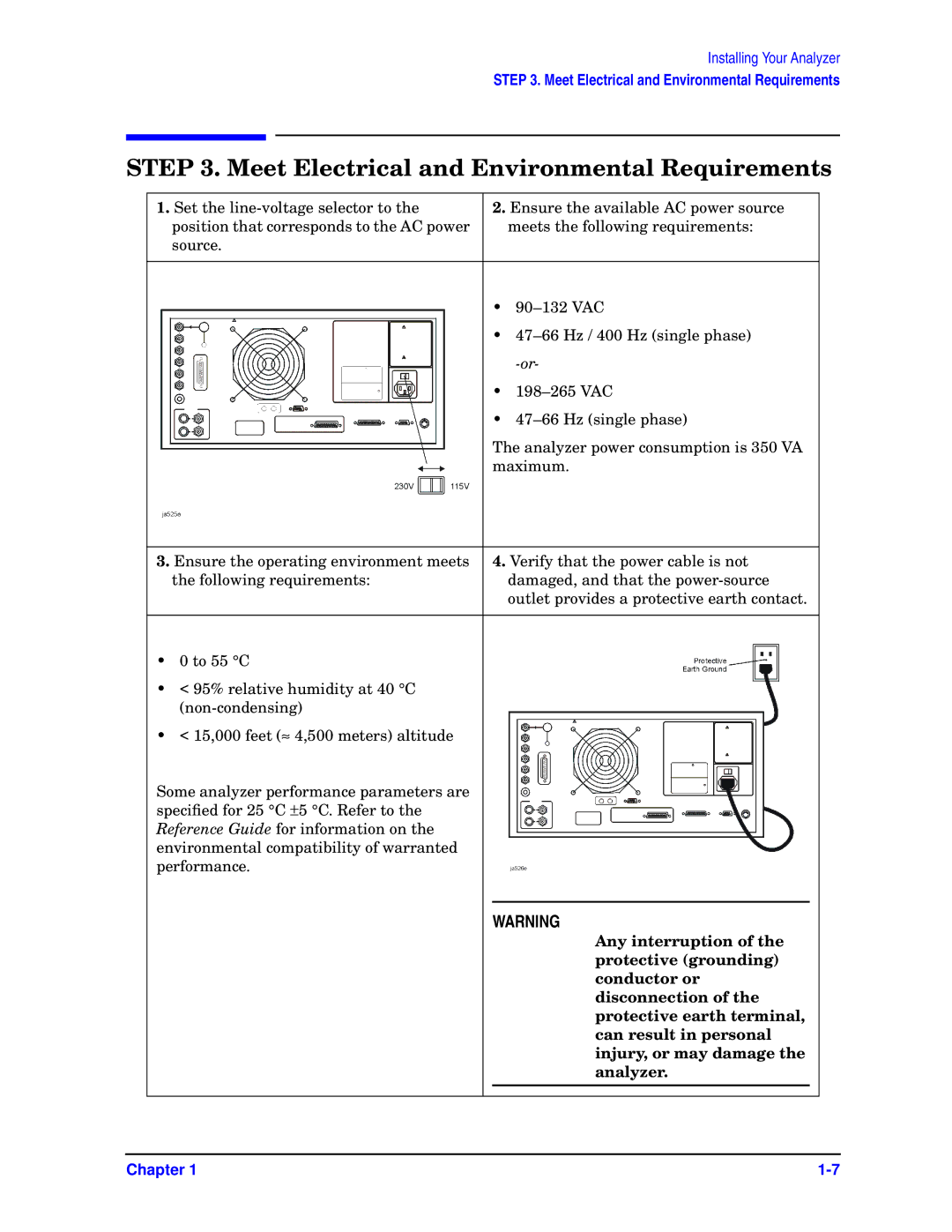
Installing Your Analyzer
STEP 3. Meet Electrical and Environmental Requirements
STEP 3. Meet Electrical and Environmental Requirements
1. Set the |
| 2. Ensure the available AC power source |
| |
position that corresponds to the AC power |
|
| meets the following requirements: |
|
source. |
|
|
|
|
|
|
|
|
|
|
| • |
| |
|
| • |
| |
|
|
|
| |
|
| • |
| |
|
| • |
| |
|
| The analyzer power consumption is 350 VA |
| |
|
| maximum. |
| |
|
|
|
| |
3. Ensure the operating environment meets |
| 4. Verify that the power cable is not |
| |
the following requirements: |
|
| damaged, and that the |
|
|
|
| outlet provides a protective earth contact. |
|
|
|
|
|
|
• 0 to 55 °C |
|
|
|
|
• < 95% relative humidity at 40 °C |
|
|
|
|
|
|
|
| |
• < 15,000 feet (≈ 4,500 meters) altitude |
|
|
|
|
Some analyzer performance parameters are |
|
|
|
|
specified for 25 °C ±5 °C. Refer to the |
|
|
|
|
Reference Guide for information on the |
|
|
|
|
environmental compatibility of warranted |
|
|
|
|
performance. |
|
|
|
|
|
|
|
| |
|
| WARNING |
| |
|
|
| Any interruption of the |
|
|
|
| protective (grounding) |
|
|
|
| conductor or |
|
|
|
| disconnection of the |
|
|
|
| protective earth terminal, |
|
|
|
| can result in personal |
|
|
|
| injury, or may damage the |
|
|
|
| analyzer. |
|
|
|
|
|
|
|
|
|
|
|
Chapter 1 |
